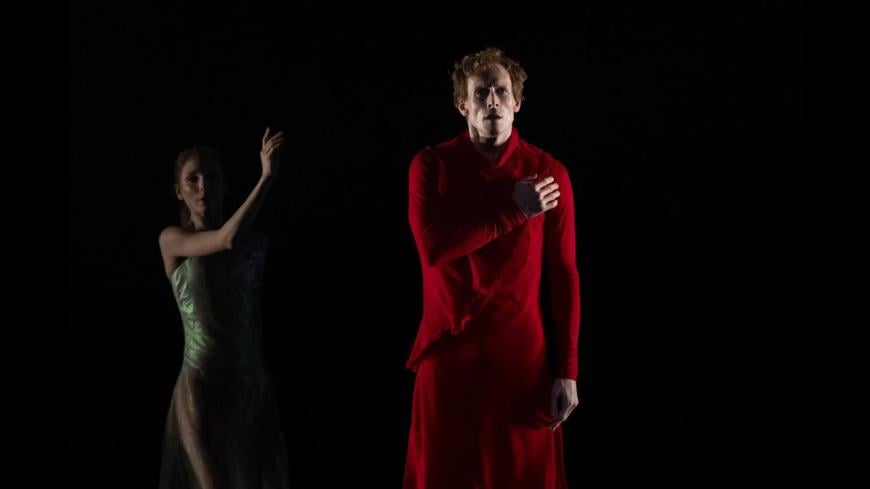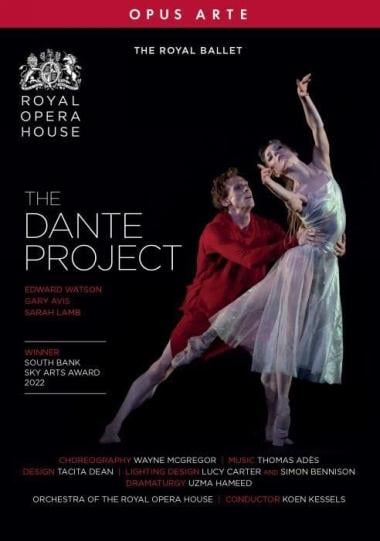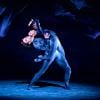
Thomas Adès’s The Dante Project is a rare bird — a full-evening-length ballet that can work just as well as a concert piece. How many other such works can you name? OK, there’s Adolphe Adam’s Giselle; the two Léo Delibes ballets, Sylvia and Coppélia; the three Tchaikovsky ballets, Swan Lake, The Sleeping Beauty, The Nutcracker; three more from Sergei Prokofiev, Romeo and Juliet, Cinderella, and the late work The Tale of the Stone Flower. Dmitri Shostakovich’s The Golden Age qualifies, as do two other underrated 20th-century ballets, Hans Werner Henze’s Ondine and Benjamin Britten’s The Prince of The Pagodas, the sole British entry before Dante. Maybe Aram Khachaturian’s Gayaneh and Spartacus, too.

There are others, but not many others, over the last 300 years — which makes Adès’s mighty achievement all the more unusual and valuable. Already, less than a year after its U.S. premiere in Los Angeles, Dante is making its way into the home with a DVD/Blu-ray recording by the co-commissioning Royal Ballet of London (Opus Arte). Also, an audio recording from the other co-commissioners, Gustavo Dudamel and the LA Phil, is on the way from Nonesuch in April.
While Adès’s score stands perfectly well on its own, it is enlightening to see what the dancers and backdrops contribute to the project. With the clanging of bells and buzzing of brasses in the dissonant, violent opening measures of Act 1, “Inferno,” the visuals start with a frightening image — a seemingly lost Dante (Edward Watson) twirling around to the madness in a crater within a dark cavern, backed by mountains and crevices reminiscent of the coastal terrain of Southern California around Malibu.
Soon, the yellow-orange-clad Virgil (Gary Avis), the Roman poet of antiquity, joins Dante as a guide as they bear witness to a succession of black-clad underworld residents who mime their stories of what has condemned them to this place. In the ballet’s most celebrated section, “Thieves,” the miscreants do their dance in a CO2 ground fog to the dashing Shostakovich-like paraphrase of Franz Liszt’s Grand galop chromatique. (As at Disney Hall and the Dorothy Chandler Pavilion, this gets an automatic ovation at Covent Garden that seems built into the work.)
The musical language and stage action becomes more austere in the second act, “Purgatorio.” After some whooshing wind-like sounds created on acoustic instruments that resemble electronic white noise, a disembodied elderly cantor sings a Hebraic chant over the lower strings, and the subsequent music is often Middle Eastern in flavor, including a grotesque dance with the backing of a contrabassoon. In front of a backdrop of a pale, washed-out drawing of a tree in a faded urban scene, multiple Dantes — three of them, one of whom represents the poet as a child — explore his past life and his love for the earthly Beatrice (also represented by three dancers), who died at a young age. The act ends in musically spangled splendor as Dante is reunited with Beatrice (Sarah Lamb) in purgatory.
Ever-changing planetary spheres projected on a screen overlook Act 3, “Paradiso.” The score unfolds mostly with notes grouped in threes, not seeming to go anywhere in the murky light yet gradually ascending into paradise with Dante and Beatrice. Finally, an invisible celestial choir (the London Symphony Chorus) joins in wordlessly as Dante and Beatrice are left onstage to a glittering orchestral coda.
The Royal Opera House Orchestra under the direction of Koen Kessels plays well, if falling somewhat short of the pizzazz of the LA Phil’s performance. Ultimately, fans of The Dante Project will probably want to have both this Royal Ballet video and the forthcoming LA Phil recording for a full representation of this great work’s possibilities.



